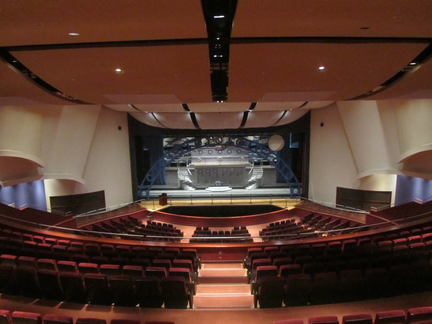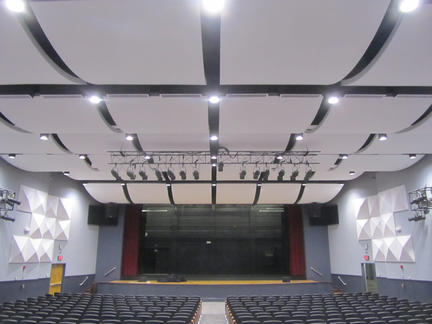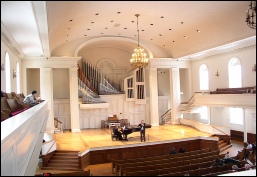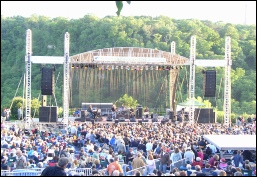Performance Spaces
The acoustics of musical and theatric performance spaces are important factors influencing listener perceptions of the quality of sound of the performance. The acoustical design of the performance space and the stage also influence the degree of ensemble among the performers.
Acoustics of concert halls are subjectively characterized using terms that include
warmth, intimacy, clarity, envelopment, brilliance, and liveness. The qualities
are related to the degree of reverberant enhancement, the influences of reflected
sound with respect to time, the relative levels of sound at different frequencies,
and the uniformity of sound levels throughout the seating. Musical performances
can be enhanced by an appropriate degree of reverberation. Rooms designed to incorporate
reflected sound which arrives in close synchronization with the direct sound enhance
the sense of musical envelopment. Rooms designed without adequate sound diffusion
can generate long-
Acoustics of spaces used for spoken performance are often characterized by the degree of speech intelligibility at the listener. Spaces that support intelligible speech generally have lower room volumes, shorter reverberation times, and smaller distances between the performer and the listener.
Other important design issues in the design of performance spaces include the level of background noise generated by mechanical ventilation systems and the level of noise that may intrude from adjacent occupied spaces and the exterior.
Architects and acousticians can design performance spaces to enhance acoustics for speech and music by adjusting the room volume, room shape, numbers of listener seats, and the placement, shape, and composition of the ceiling and walls. The acoustics of the stage are similarly adjusted by means of the stage shape, volume, and finish.
Software modeling programs are used to to characterize the reverberation times of spaces using architectural drawings and finish details. The models are also used to explore the effects of modifications to surface types and finishes and room volumes that can affect the reverberation times in order to meet performance goals. Models are further used to explore sound reflection and diffusion patterns obtained by surface shape and type.




